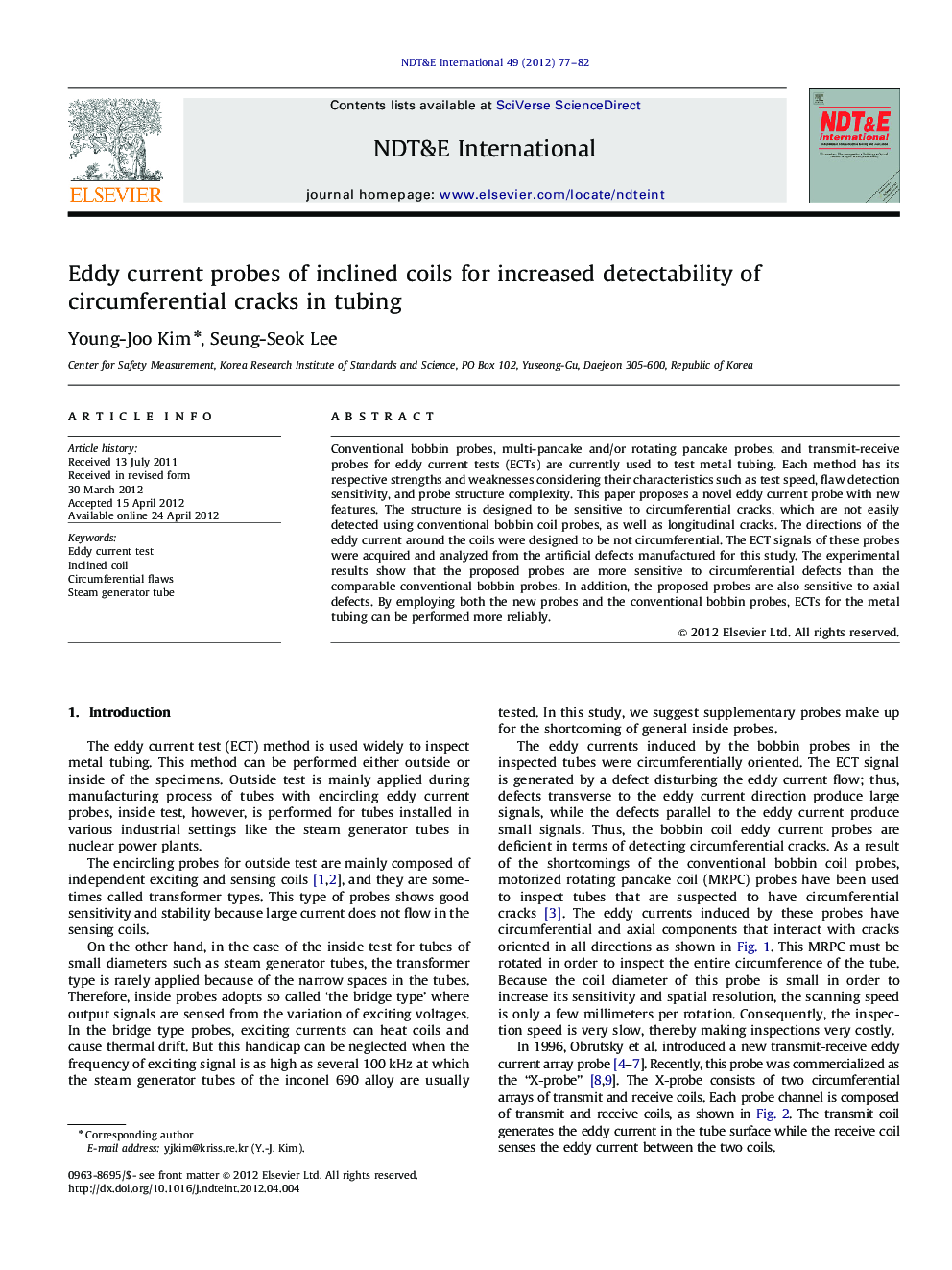| Article ID | Journal | Published Year | Pages | File Type |
|---|---|---|---|---|
| 295270 | NDT & E International | 2012 | 6 Pages |
Conventional bobbin probes, multi-pancake and/or rotating pancake probes, and transmit-receive probes for eddy current tests (ECTs) are currently used to test metal tubing. Each method has its respective strengths and weaknesses considering their characteristics such as test speed, flaw detection sensitivity, and probe structure complexity. This paper proposes a novel eddy current probe with new features. The structure is designed to be sensitive to circumferential cracks, which are not easily detected using conventional bobbin coil probes, as well as longitudinal cracks. The directions of the eddy current around the coils were designed to be not circumferential. The ECT signals of these probes were acquired and analyzed from the artificial defects manufactured for this study. The experimental results show that the proposed probes are more sensitive to circumferential defects than the comparable conventional bobbin probes. In addition, the proposed probes are also sensitive to axial defects. By employing both the new probes and the conventional bobbin probes, ECTs for the metal tubing can be performed more reliably.
